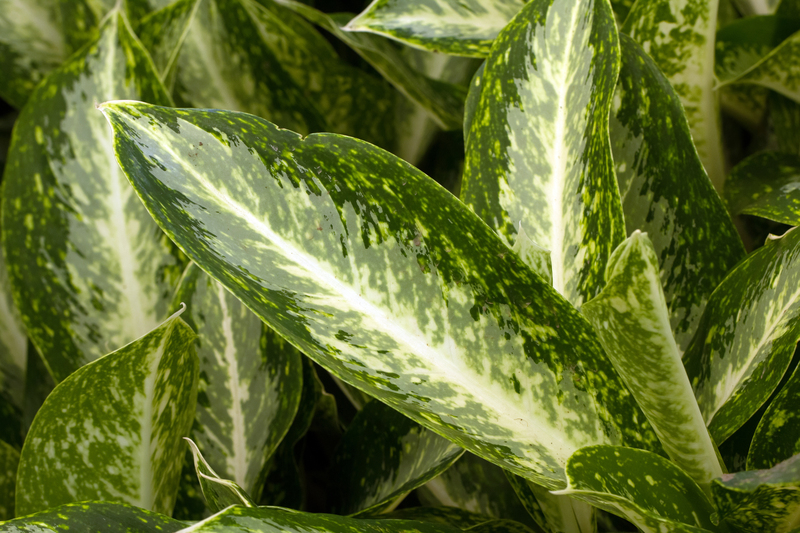Discover Artistic Hedge Trimming Shapes and Techniques
Posted on 31/05/2025
Discover Artistic Hedge Trimming Shapes and Techniques
Welcome to the fascinating world of artistic hedge trimming, where creativity meets horticulture! Whether you're a seasoned gardener or a curious beginner, mastering the art of sculpting shrubs and hedges opens up limitless creative possibilities right in your garden. In this comprehensive guide, we'll explore the most popular hedge shapes, delve into innovative hedge trimming techniques, and provide in-depth tips to help you design impressive living masterpieces that will awe your neighbors and guests. Read on to uncover the secrets of decorative hedge trims and elevate your landscape design.

What Is Artistic Hedge Trimming?
Artistic hedge trimming--also known as topiary art--is the practice of meticulously shaping and maintaining hedges or shrubs into decorative forms, geometric patterns, or whimsical animal figures. This landscaping style is a centuries-old art form, dating back to ancient Rome and reaching spectacular popularity in the formal gardens of the European Renaissance.
With proper techniques, almost any dense, evergreen shrub can be transformed into a breath-taking organic sculpture. The most common hedge shapes range from simple spheres and rectangles to elaborate spirals, cones, and truly unique creations.
Benefits of Artistic Hedge Trimming
- Boosts curb appeal: Dramatic hedge shapes instantly enhance a garden's beauty and value.
- Showcases creativity: Your artistic hedge trimming reflects your personality--no two designs are ever alike.
- Improves plant health: Proper trimming encourages dense, healthy growth and reduces disease.
- Acts as a privacy barrier: Taller, thicker trimmed hedges shield your garden for privacy or act as windbreaks.
Types of Artistic Hedge Shapes
When it comes to hedge sculpting shapes, imagination is your only limit! Here are the most beloved and visually impactful types:
1. Geometric Shapes
- Rectangular & Square: Classic and formal, ideal for borders and garden "rooms."
- Spherical/Ball: Adds elegance and softness. Works beautifully as accents or line features.
- Cone & Pyramid: Tall, tapering forms that create a dramatic sense of stature and direction.
- Spiral: Modern and eye-catching, spirals are perfect for topiary specimens in pots or entryways.
2. Animal and Object Topiary
- Animals (birds, rabbits, peacocks): Bring life and whimsy to a garden, especially for family or children's areas.
- Objects (teapots, balls, abstract forms): Showcase your creativity with intricate hedge designs.
3. Themed and Decorative Edging
- Waves & Curves: Flowing trims create movement and modern appeal.
- Cloud Pruning: Organic, mist-like shapes inspired by Japanese gardens. Ideal for showcasing shrub textures.
4. Architectural Styles
- Walls & Columns: Transform your hedge into living fortifications or garden passageways.
- Arcades & Arches: Carefully pruned to form walk-through tunnels or decorative lattice-like effects.
Best Plants for Artistic Hedge Trimming
Choosing the right plant is crucial for impressive creative hedge sculpting. Select species that are:
- Densely foliated: Small, abundant leaves conceal cuts and enable smooth shapes.
- Evergreen: Keeps your form year-round; avoid deciduous shrubs unless for seasonal effects.
- Responsive to pruning: Some species recover faster and grow denser after trimming.
Top recommended plants for artistic hedge trimming:
- Boxwood (Buxus): The pro's choice for both small and tall sculptures. Slow-growing, compact, and hardy.
- Yew (Taxus): Long-lived and tolerant of heavy pruning, yew is ideal for intricate and large shapes.
- Privet (Ligustrum): Fast-growing and forgiving--notable for formal geometric hedges.
- Holly (Ilex): Shiny leaves add contrast and texture to your green art.
- Japanese Holly (Ilex crenata): A boxwood alternative, ideal for small and medium hedge sculptures.
- Lonicera nitida: Versatile and fast-growing, excellent for cloud-pruning shapes.
- Photinia & Laurel: For taller boundary hedges and bold, contemporary forms.
Essential Tools for Hedge Trimming Art
Your toolkit forms the backbone of successful artistic hedge trimming techniques. Equip yourself with:
- Quality Hedge Shears: Sharp, clean blades ensure precise and easy cuts.
- Powered Hedge Trimmers: For large or tall designs, save time and energy with electric or battery equipment.
- Topiary Frames & Templates: Wire frames or cardboard guides assist with symmetrical shapes and complex forms.
- Hand Pruners or Snips: For detail work, touch-ups, and narrow spaces.
- String Line & Tape Measure: Maintain straight edges and even proportions.
- Marking Chalk or Spray Paint: Outline your designs directly on the hedge (mark lightly) as a guide.
- Gloves and Safety Goggles: Safety first--protect yourself from thorns and flying debris.
Top Hedge Trimming Techniques for Artistic Results
Achieving ornamental hedge designs is about technique as much as inspiration. Here's a look at foundational trimming methods:
1. The Scaffold Cut
Often the first step in creative hedge carving, the scaffold cut involves removing large amounts of outer growth to establish the basic structure. This sets your hedge at the approximate size and shape required for the final design.
2. Gradual Refinement
Work from the bottom up and the outside in. Cut in small increments, frequently stepping back to check symmetry and balance. This approach prevents over-cutting and ensures clean, professional shapes.
3. Layering Technique
For cloud-pruned or wave effects, trim hedge layers at slightly staggered lengths, gently rounding at the top and edges. This encourages plush, fluffy forms and highlights different foliage textures.
4. Template Trimming
For beginners attempting geometric or animal topiary, use a wire frame or create a lightweight cardboard template. Place it over/within the shrub, and trim any protruding foliage. As confidence grows, try freehand designs.
5. Detailing
After shaping the basic form, refine details: use small hand shears to neaten lines, adjust curves, and create crisp edges. True artistry lies in patient, precise finishing touches.
Step-by-Step Guide to Sculpting a Hedge
Preparation
- Choose healthy, vigorous plants or hedges suited to your climate and design goals.
- Check for nesting birds -- delay work if any are present.
- Sharpen and disinfect all tools to prevent disease spread.
- Water shrubs the day before to reduce stress.
Planning Your Design
- Sketch your desired hedge shape or use printed inspiration.
- Mark the outline on the plant with string or chalk.
- If using templates, securely attach or steady them before trimming.
Trimming Process
- Start cutting at the top, working down the sides. This avoids fallen clippings from hiding lower branches.
- Trim gradually--take small amounts off frequently, instead of big cuts. Patience provides smoother results.
- Step back regularly to view your work from all angles.
- Finish with detail shears and hand pruners to define shapes and edges.
- Collect and compost the clippings.
Post-Trimming Care
- Water thoroughly.
- Check for pests or disease and treat as required.
- Apply a light, balanced fertilizer during growing season to encourage dense regrowth.
- Repeat light trims every couple months to maintain precision.
Seasonal Timing for Artistic Hedge Trimming
Clever timing protects beautiful shapes and ensures robust plants. Major pruning is usually done in late winter or early spring, before new growth appears. Lighter trims to maintain form may be carried out through late spring and summer.
- Avoid hard cutting after midsummer, as late fresh growth may be damaged by cold.
- Never prune in frost or drought, which can shock and weaken plants.
For boxwood, yew, and holly, late spring and mid-summer light trims keep ornamental shapes sharp and promote dense coverage. Always research your specific species' preferences for best results.
Inspiring Artistic Hedge Trimming Ideas
Ready to transform your garden? Here are fresh hedge sculpting inspirations for your next landscaping masterpiece:
- Entryway Arches: Welcome guests with living doorways shaped from privet or yew.
- Geometric Borders: Line paths with perfect boxwood balls and low hedges in zig-zag shapes.
- Whimsical Animals: Use decorative topiary frames to outline rabbits or even elephants!
- Modern Spirals: Frame patio corners with spiraling conifers or cone-shaped boxwoods.
- Cloud-Pruned Islands: Cluster lonicera or Japanese holly in freeform, fluffy shapes inspired by Japanese zen gardens.
- Green Sculptures: For the truly ambitious, try abstract designs such as cubes emerging from spheres or entwined hearts for special occasions.
Tips for Long-Lasting Artistic Hedge Sculptures
- Start small, especially as a beginner--basic balls, cubes, and pyramids are easier to master.
- Regularly trim, but avoid cutting below the last green leaf, or you may create bare patches.
- Fertilize lightly, supporting lush, compact foliage for perfect, crisp shapes.
- Keep tools sharp to ensure clean, smooth edges and minimize plant shock.
- Correct mistakes gradually: Hedges regrow, so don't panic if your first cuts aren't perfect.
- Experiment with color: Mix green, golden, or variegated shrubs for striking contrast and added visual interest.

Common Mistakes to Avoid in Hedge Sculpting
- Over-pruning: Taking too much at once can leave gaps and stress plants. In artistic hedge trimming, less is often more.
- Neglecting the base: Always keep the base wider than the top, to ensure sunlight reaches lower branches.
- Skipping maintenance: Allowing growth to become unruly means having to start over next season.
- Using dull shears: These cause ragged cuts that invite disease and spoil sharp lines.
- Ignoring plant health: Water, feed, and monitor hedges so your living sculptures remain vibrant.
Unlock the Beauty of Artistic Hedge Trimming
From stately spheres to fantastical animal forms, artistic hedge trimming is your ticket to a visually striking garden--one that reflects your vision, skill, and passion. The journey from unruly shrub to perfect topiary is rewarding for mind and soul, inviting meditative practice and ongoing creative expression.
By mastering both classic and modern hedge trimming shapes and techniques, you'll turn your garden landscape into a living gallery that delights season after season. Whether you dream of formal avenues or playful, storybook characters, now is the perfect time to experiment, learn, and grow your own signature garden style.
Now that you've discovered the world of artistic hedge trimming shapes and techniques, it's time to grab your shears and bring those green dreams to life. Happy sculpting!

